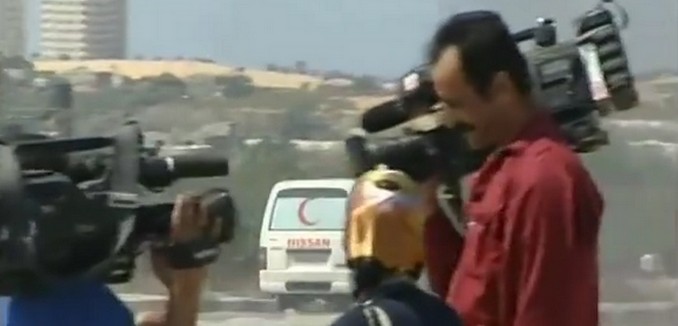The Jerusalem Post reported Wednesday that the Anti-Defamation League (ADL) criticized the “rush to judgment” of the United Nations and other international organizations about last week’s killing of two teens in Beitunia during violent riots.
According the Post, the ADL’s Director Abe Foxman said:
The international community must respect the IDF’s right and responsibility to fully investigate this incident, and should refrain from rashly calling for extraordinary action before all the facts have been examined.
Foxman’s caution is well advised.
An organization, Defence for Children International (DCI) released footage of the shootings that come from CCTV cameras of nearby businesses.
There are a number of questions that the videos raise. For one it isn’t clear who is doing the shooting.Though the video claims that the teens were shot by the IDF, no soldiers are visible. .
There is, of course, a history of false Palestinian charges of Israel killing Palestinians that should give pause. The most infamous of these incidents is the shooting of Mohammed al-Dura during second intifada in September 2000. Though the IDF was blamed for the boy’s death and the IDF initially took responsibility, doubts began to emerge.
In 2003 James Fallows wrote Who Shot Mohammed al-Dura? in the Atlantic which thoroughly reviewed the evidence. Though he couldn’t answer the question conclusively, a look at the evidence convinced Fallows that the answer was not the IDF. Crucially, Fallows observed:
In short, the physical evidence of the shooting was in all ways inconsistent with shots coming from the IDF outpost—and in all ways consistent with shots coming from someplace behind the France 2 cameraman, roughly in the location of the Pita. Making a positive case for who might have shot the boy was not the business of the investigators hired by the IDF. They simply wanted to determine whether the soldiers in the outpost were responsible. Because the investigation was overseen by the IDF and run wholly by Israelis, it stood no chance of being taken seriously in the Arab world. But its fundamental point—that the concrete barrel lay between the outpost and the boy, and no bullets had gone through the barrel—could be confirmed independently from news footage.
A year and a half later, as Israel fought Operation Defensive Shield to defeat the terror of the second intifada Palestinians accused Israel committing a massacre in Jenin. Palestinian official Saeb Erakat (now a peace negotiator) told CNN:
We want to help in order to insure the success of the secretary’s visit, because insuring the success of implementing 1402 means stopping the killing fields out there, and you know as the numbers I am receiving today is that the numbers of killed could reach 500 since the Israeli offensive began. Thousands of wounded.
You know, the Jenin refuge camp is no longer in existence, and now we’ve heard of executions there.
The charges were false but that didn’t stop news organization from promoting them uncritically. Contrary to Erakat’s claims 54 Palestinians—a majority of them armed terrorists involved in the fighting—as well as 23 IDF soldiers were killed in Jenin and fewer than 10% of the buildings in were destroyed.
David Zangen, an IDF doctor who served in Jenin, publicly blasted the media and international organizations for perpetuating the Palestinian lies saying, “I am infuriated by the claims of a massacre in Jenin, for another reason. The paramedics and I risked our lives to treat the wounded Palestinians. As well as the wounded, we also treated the sick. The Palestinian doctors did not come to their aid, and we could not leave them without medical treatment.”
In August 2002, a United Nations report concluded that there had been no massacre in Jenin.
The watchdog group, HonestReporting called Jenin one of the media’s “big lies” about Israel.
Since then there have been numerous instances where false Palestinian accusations were uncritically sustained by the news media. In 2011, a Palestinian woman, Jawaher Abu Rahma, died after a protest in the town of Bilin. Palestinians claimed that she died from inhaling tear gas, a charge that was repeated in the media. Even though there are no documented cases of people dying from tear gas inhalation in open spaces few media outlets questioned the claim. It soon emerged that there a number of unusual details about the case, including that Abu Rahma had not been listed among those injured at the protest. The watchdog group, CAMERA, detailed the many other anomalies with the story. At the end CAMERA listed six other cases (including the al-Dura case) in which false claims were reported uncritically and observed “[i]n the context of the Israeli-Palestinian conflict, where Palestinian deaths have so often been manipulated and even staged for political purposes, journalists have an added burden to fully report Israel’s account,” to be in compliance with the Code of Ethics of the Society of Professional Journalists.
The Israeli government has opened an investigation into the Beitunia shootings.
[Photo: PJ Media / YouTube ]




